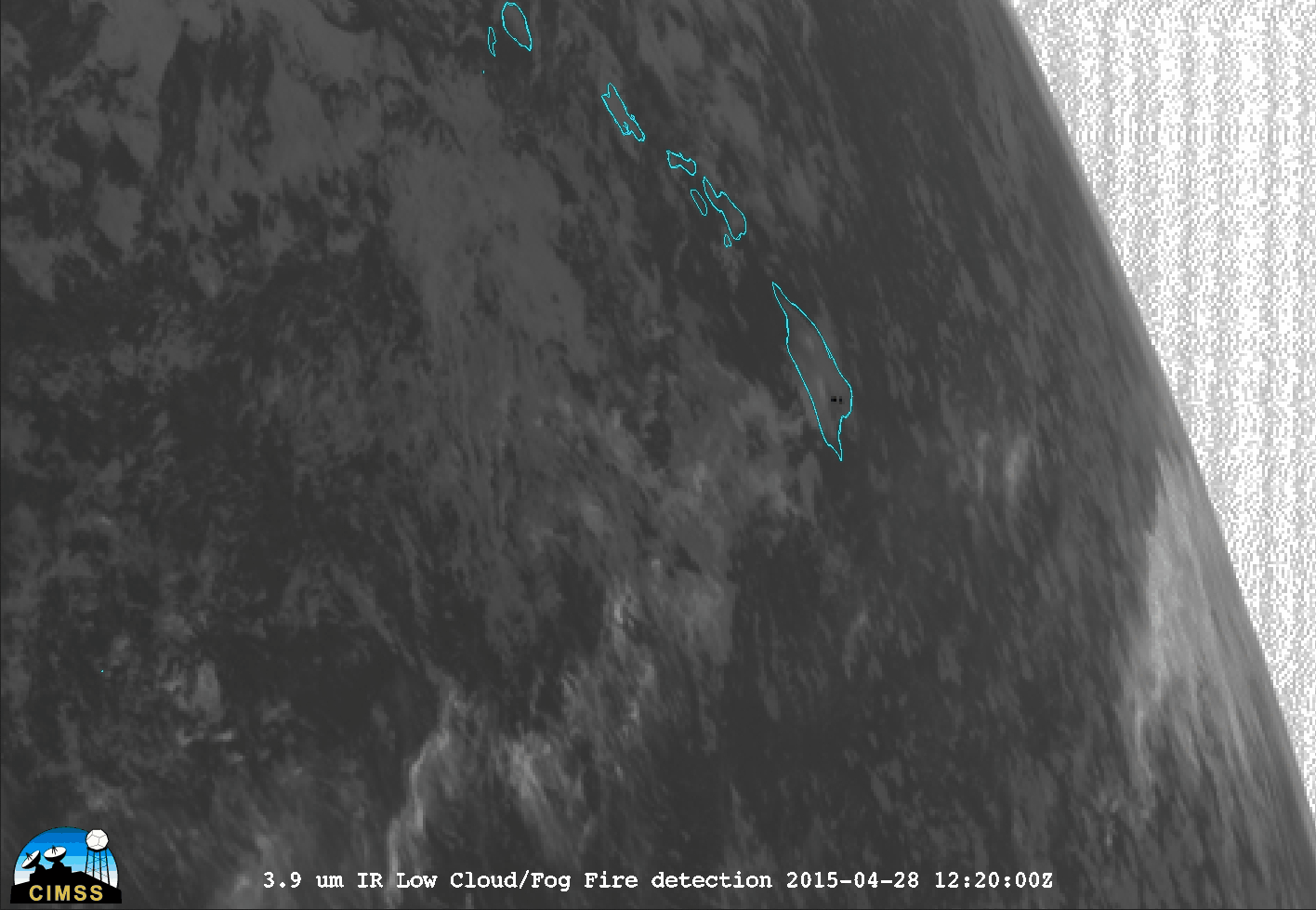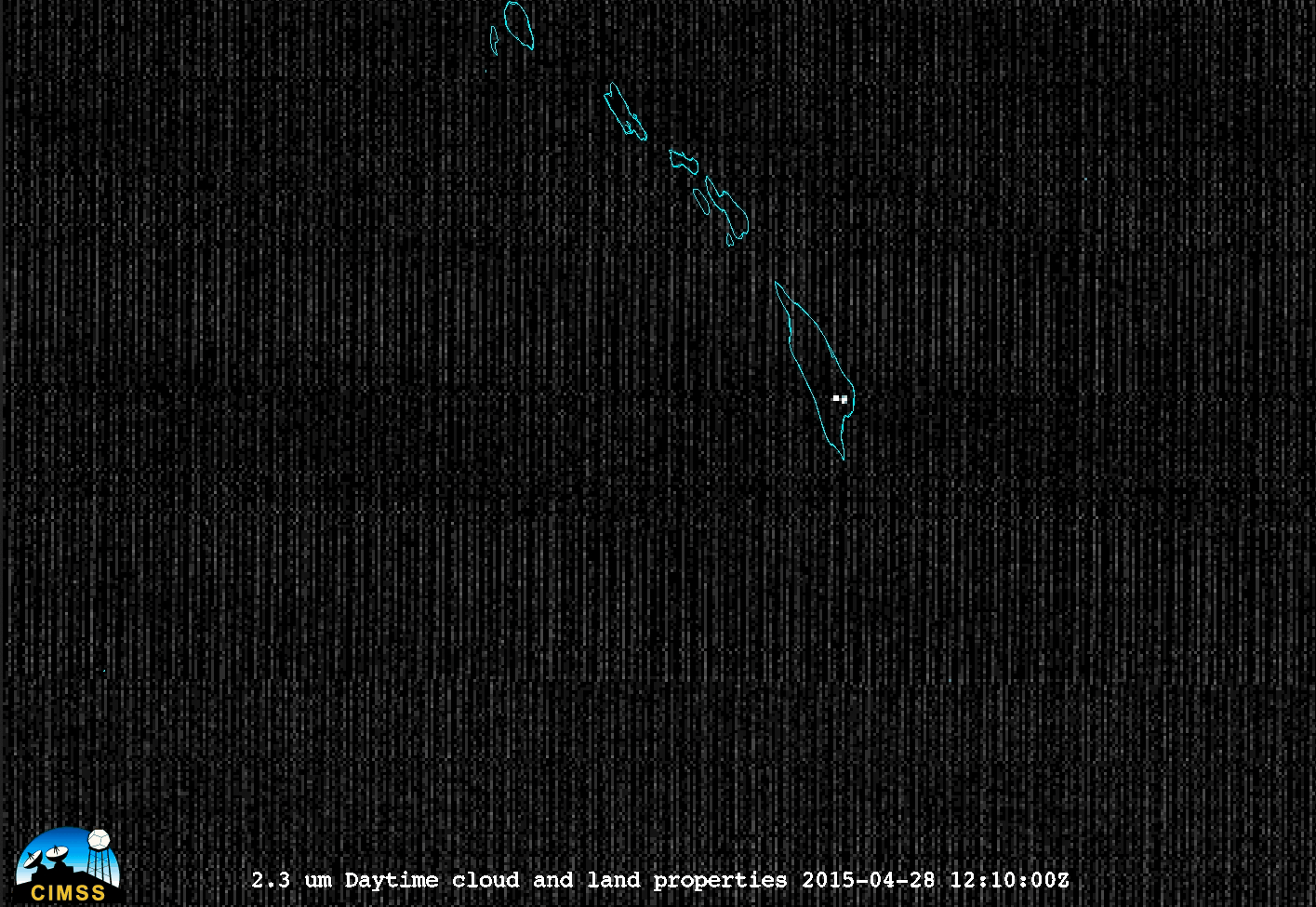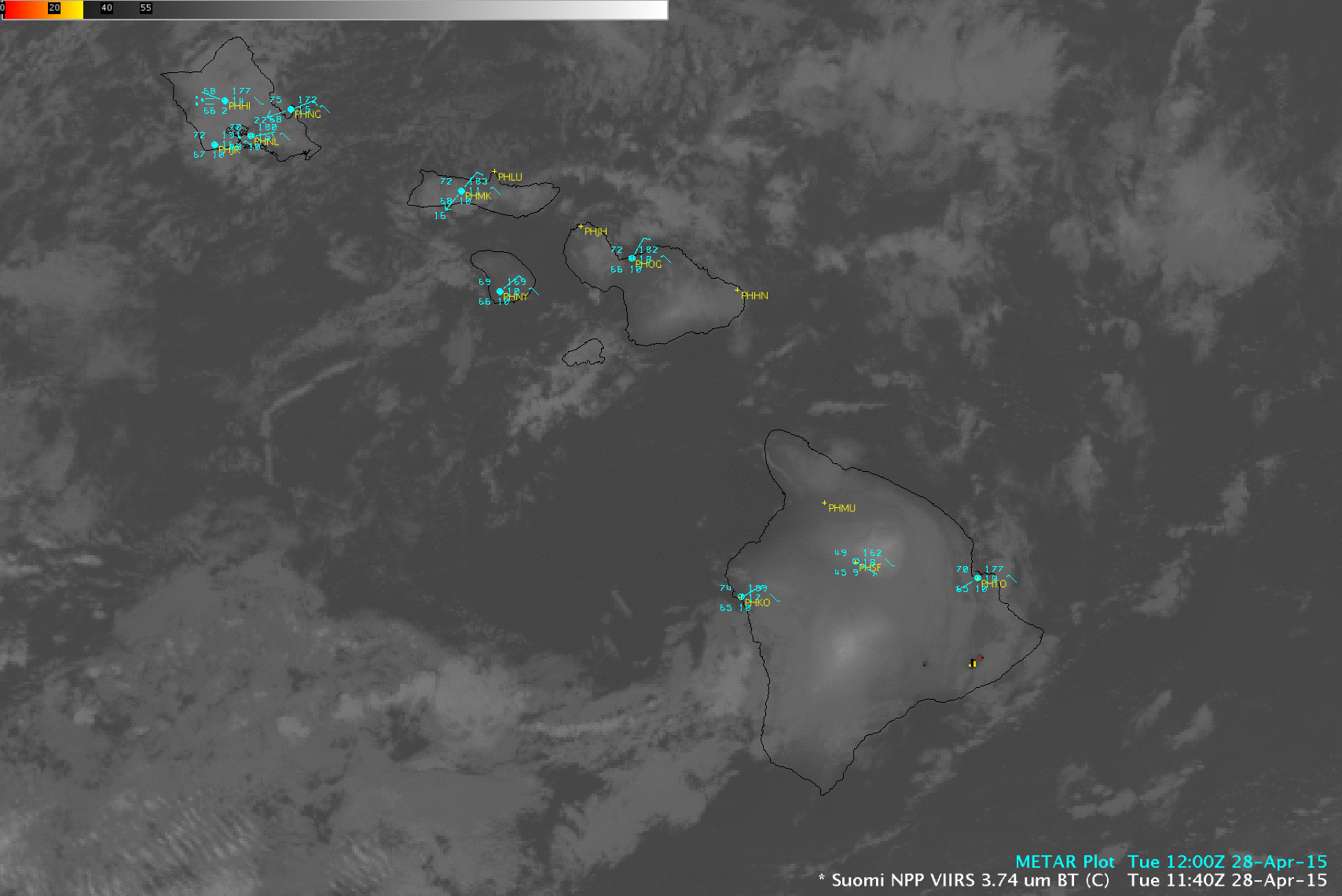The nighttime glow of Hawaii’s Kilauwea volcano
The Kilauwea Volcano on the Big Island of Hawai’i began erupting in March 2008 (blog post | USGS reference), and has been in a nearly continuous phase of activity since then. During the pre-dawn hours of 28 April 2015, thermal signatures of the Kilauwea summit lava lake and nearby lava flows could be seen on McIDAS-V images of 10-minute interval Himawari-8 3.9 µm shortwave IR images (above; click image to play animation). The dark black pixels represent the hottest IR brightness temperatures.
On the corresponding Himawari-8 2.3 µm near-IR channel images (below; click image to play animation), the clusters of bright white pixels represent the glow of the hot lava features.
A different view is provided by the polar-orbiting Suomi NPP satellite — a comparison of AWIPS II images of VIIRS 0.7 µm Day/Night Band and 3.74 µm shortwave IR data (below) revealed the locations of the hottest lava features (black to yellow to red color enhancement) at 11:40 UTC (1:40 am local time).
A longer animation using GOES-15 (GOES-West) 3.9 µm shortwave IR images (below; click image to play animation) showed considerable temporal fluctuation in the location and intensity of the hot lava pixels (black to yellow to red color enhancement). For the latest information on the Kilauea eruption, visit the Hawaiian Volcano Observatory.




